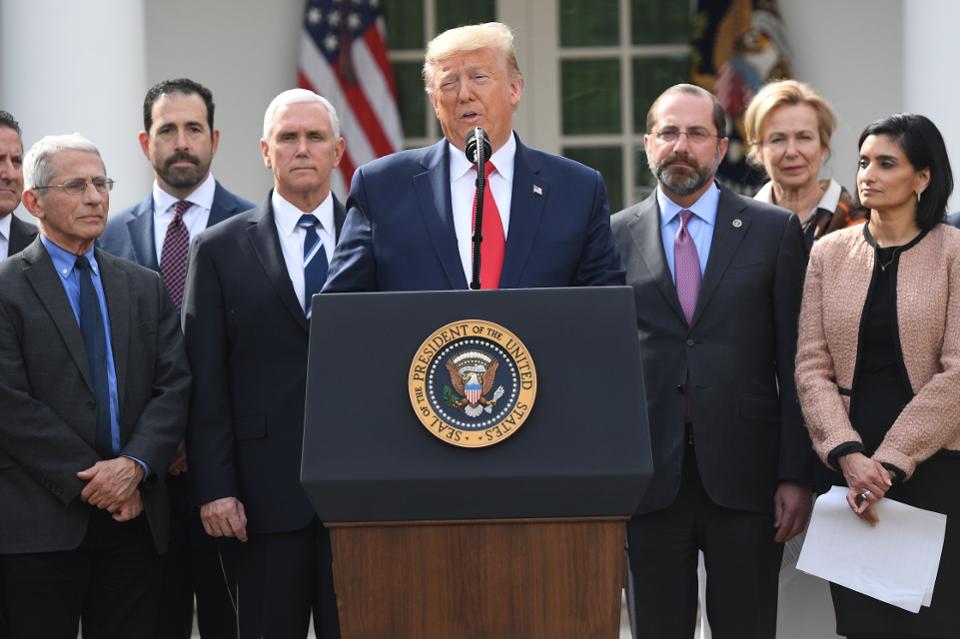The U.S. House of Representatives on Friday approved an unprecedented $2.2 trillion stimulus package to alleviate the economic devastation of the coronavirus pandemic and sent it to President Donald Trump to sign into law.
Here are major elements of the plan. Cost estimates are provided by the Committee for a Responsible Federal Budget.
DIRECT PAYMENTS TO AMERICANS
Direct payments of up to $1,200 each to millions of Americans, with additional payments of $500 per child. Payments would be phased out for those earning more than $75,000 a year. Those earning more than $99,000 would not be eligible.
Estimated cost: $290 billion
ENHANCED UNEMPLOYMENT AID
Payments for jobless workers would increase by $600 per week. Laid-off workers would get those payments for up to four months. Regular benefits, which typically run out after six months in most states, would be extended for an additional 13 weeks.
Self-employed workers, independent contractors and those who typically don’t qualify for unemployment benefits would be eligible. The government would also partially make up wages for workers whose hours are scaled back, in an effort to encourage employers to avoid layoffs.
Estimated cost: $260 billion
SMALL BUSINESS LOANS AND GRANTS
Loans for businesses that have fewer than 500 employees could be partially forgiven if they are used for employee salaries, rent, mortgage interest and utility costs. The bill also includes emergency grants for small business.
Estimated cost: $377 billion.
AID TO AIRLINES, LARGE BUSINESSES
The bill sets up a fund to support a new Federal Reserve program that offers up to $4.5 trillion in loans to businesses, states and cities that can’t get financing through other means.
Companies tapping the fund would not be able to engage in stock buybacks and would have to retain at least 90% of their employees through the end of September. They would not be able to boost executive pay by more than $425,000 annually, and those earning more than $3 million a year could see their salaries reduced.
The fund would be overseen by an inspector general and a congressional oversight board. The Treasury secretary would have to disclose transactions.
Businesses owned by President Donald Trump, other administration officials or Congress members, or their family members, would not be eligible for assistance.
Loans are set aside for airlines, air cargo carriers, airline contractors and “businesses important to maintaining national security,” widely understood to be Boeing Co.
Total cost: $504 billion
GRANTS FOR AIRLINES
Airlines, air cargo carries and airline contractors also could get grants to cover payroll costs. They would have to maintain service and staffing levels, and would not be able to buy back stock or pay dividends. The U.S. government could get stock or other equity in return. Executive pay above $425,000 a year would be frozen for two years, and those who earn more than $3 million annually would see their salaries reduced.
Total cost: $32 billion
MONEY FOR STATES, HOSPITALS, EDUCATION
– $150 billion for state, local and Native American tribal governments
– $100 billion for hospitals and other elements of the healthcare system
– $16 billion for ventilators, masks and other medical supplies
– $11 billion for vaccines and other medical preparedness
– $4.3 billion for the U.S. Centers for Disease Control and Prevention
– $45 billion in disaster relief
– $30 billion for education
– $25 billion for mass-transit systems
– $10 billion in borrowing authority for the U.S. Postal Service
– $1 billion for the Amtrak passenger rail service and $10 billion for airports, which are experiencing a drop in passengers
TAX CUTS
– A refundable 50 percent payroll tax credit for businesses affected by the coronavirus, to encourage employee retention. Employers would also be able to defer payment of those taxes if necessary. Cost: $67 billion
– Loosened tax deductions for interest and operating losses. Cost: $210 billion
– Suspension of penalties for people who tap their retirement funds early. Cost: $5 billion
– Tax write-offs to encourage charitable deductions and encourage employers to help pay off student loans. Cost: $3 billion
– Waiving of federal tax on distilled spirits used to make hand sanitizer
INCREASED SAFETY NET SPENDING
– $42 billion in additional spending for food stamps and child nutrition
– $12 billion for housing programs
– $45 billion for child and family services
OTHER ELEMENTS
– A ban on foreclosing on federally backed mortgages through mid-May, and a four-month ban on evictions by landlords who rely on federal housing programs.
SOURCE: REUTERS
(Reporting by Andy Sullivan; Editing by Scott Malone, Peter Cooney, Steve Orlofsky and Jonathan Oatis)

